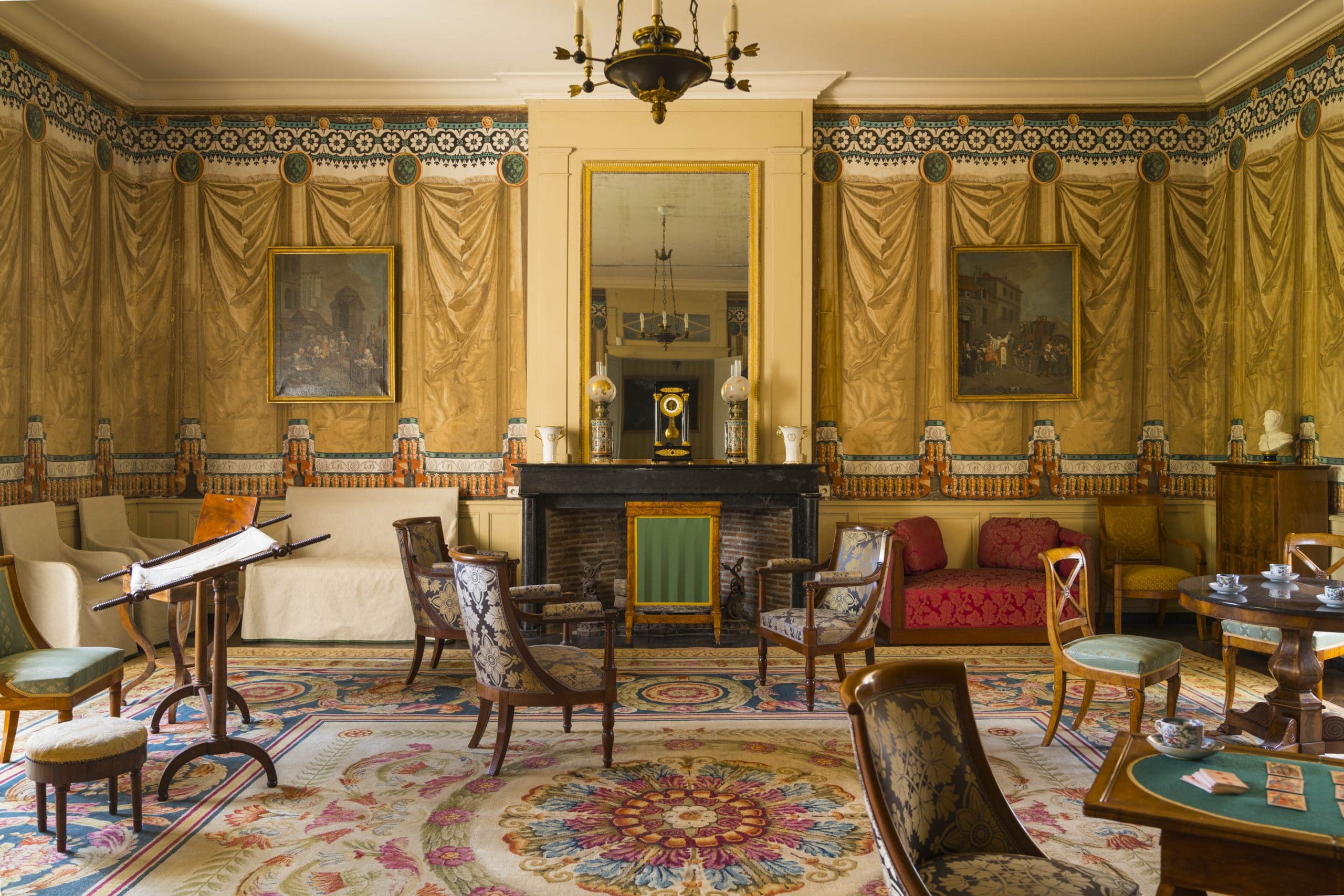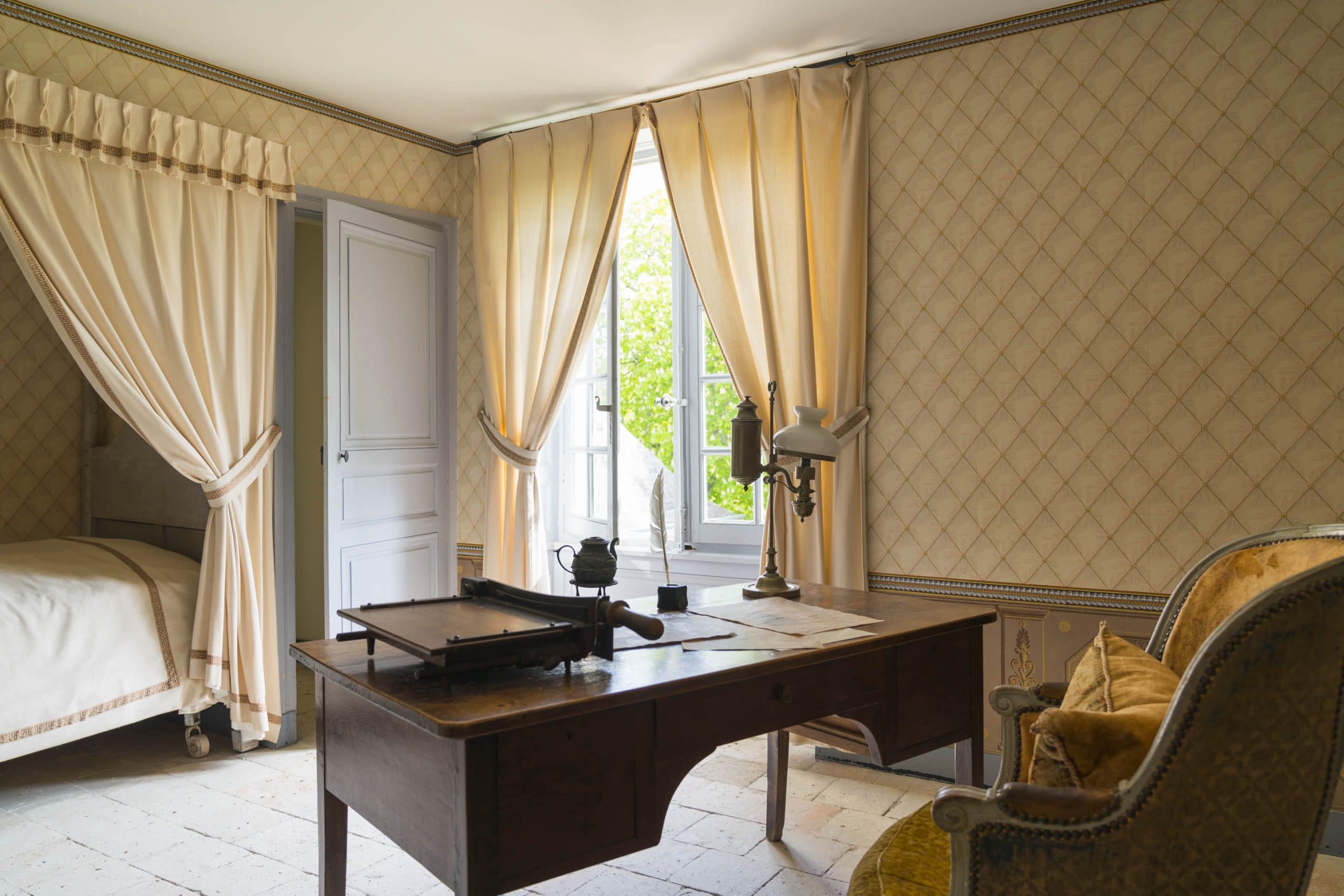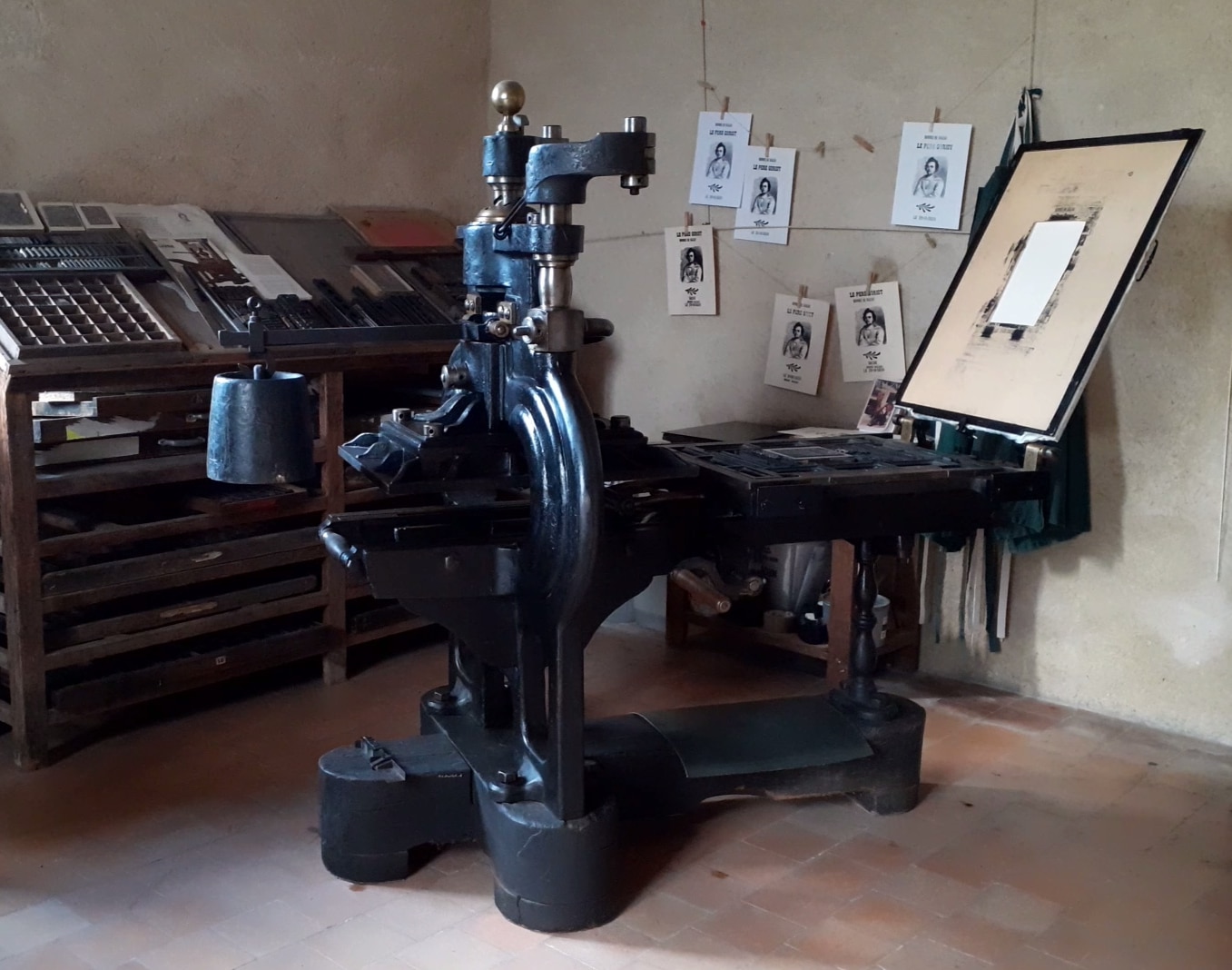Museum galleries
>> Virtual tour of the museum
>> Download the visitor brochure ( 1,2 Mo, PDF)
First floor
Visitors begin their tour by passing through the bossage door then up a large 17th century staircase to the first floor. The reception rooms whisk you away to the early 19th century. The living room (listed as a Monument Historique) is a feast for the eyes with staggering trompe-l’oeil wallpaper from the first quarter of the 19th century. This dramatic interior set the scene for Balzac's games of whist and backgammon with Jean Margonne. The wallpaper from the first quarter of the 19th century in the dining room (listed as a Monument Historique) is based on an original panel. The mythological frieze may have inspired the description of the Vauquer boarding house's lounge in Father Goriot whose manuscript Balzac wrote in Saché in 1834.
Second floor
The tour continues on the second floor. Visitors venture up the 15th century spiral staircase to drink in the cosy bedroom (listed as a Monument Historique) where the author of The Human Comedy spent long hours drinking countless cups of coffee to fuel his imagination. The other rooms on this floor introduce visitors to Balzac's life and work with a presentation of permanent collections (prints, manuscripts, engravings, paintings and sculptures) and replicas of rooms in The Human Comedy (Abbot Birotteau's bedroom in The Vicar of Tours, Derville's legal office in Colonel Chabert, Foedora's boudoir in The Magic Skin).
Ground floor
The tour ends on the ground floor of the museum. A 19th century printing workshop has been replicated to present Balzac's work as a printer between 1826 and 1828. The Musée Balzac has a new display on the château’s ground floor presenting sculptures and monuments made between 1850 and 2019 in tribute to Balzac. Displaying all these projects together enables visitors to compare pieces by the artists Paul Fournier, Henri Chapu, Alexandre Falguière and François Sicard, whose work is true to the academic tradition of a public monument in tribute to a writer. It also highlights how pioneering the pieces by Auguste Rodin and Anatole Marquet de Vasselot were in the 19th century, alongside the anti-monument by Nicolas Milhé in 2019.

New Rodin gallery display. Pieces by Auguste Rodin, Musée Balzac, Château de Saché, 2022.



